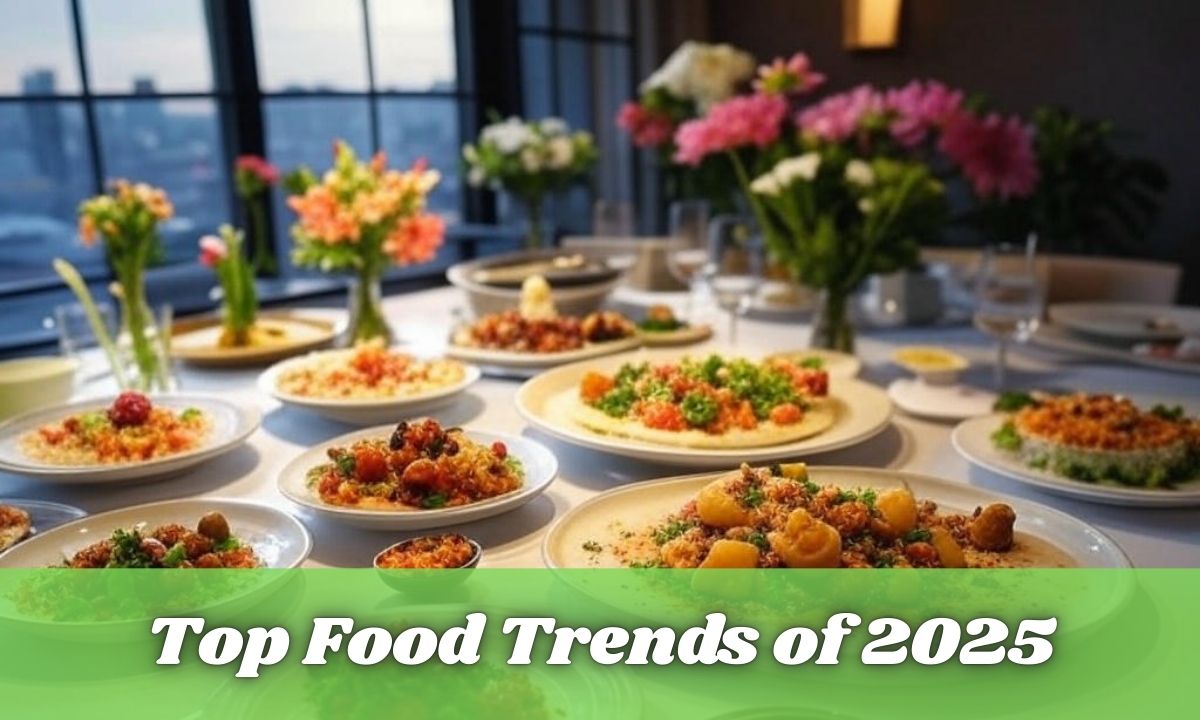The culinary landscape is evolving rapidly in 2025. Innovative food trends are reshaping how we eat and think about nutrition.
Jalbiteblog highlights the most influential movements in the food world this year. These trends reflect growing consumer demand for healthier, sustainable, and flavorful options.
Understanding these trends helps both home cooks and food enthusiasts stay ahead of the curve.
The Explosion of Plant-Based Alternatives
Plant-based eating has transformed from niche to mainstream necessity. More consumers are choosing plant alternatives for health and environmental reasons.
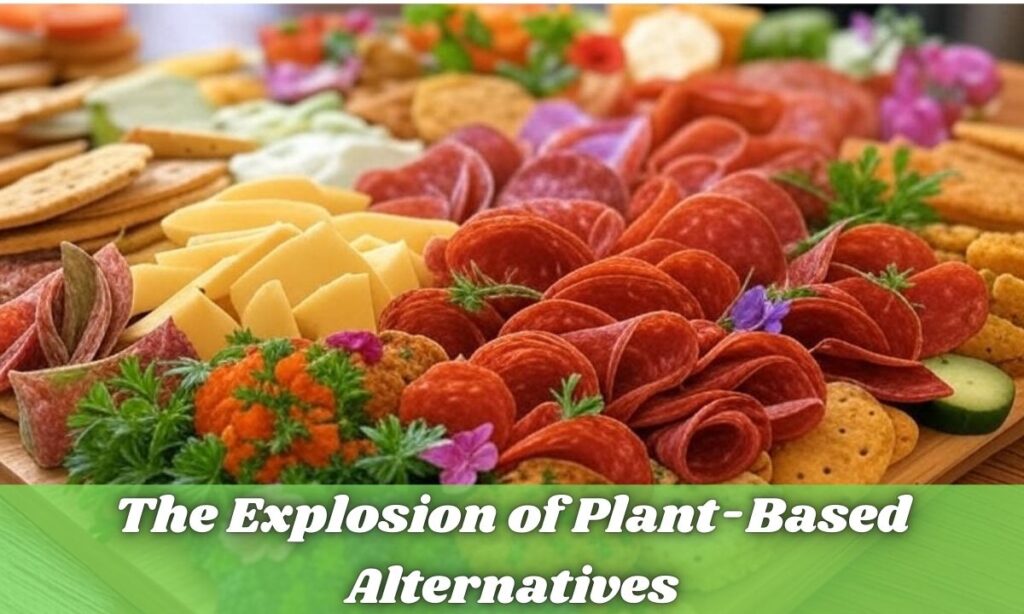
The market for these products continues to expand exponentially. Innovation in texture and flavor has made these options increasingly appealing. Even die-hard meat lovers are incorporating plant-based meals into their diets.
READ THIS BLOG: The Spiritual Meaning of Hitting a Dog with My Car: What It Really Means?
Growth in Plant-Based Protein Sources
- Pea protein has become the dominant alternative protein source due to its versatility.
- Chickpea-based products offer protein-rich options that satisfy various dietary needs.
- Mycelium proteins (fungus-based) are revolutionizing meat alternatives with their natural texture.
- Plant proteins are now formulated to match the nutritional profile of animal products.
- Consumer demand has driven significant improvement in taste and texture over previous generations.
Expansion of Plant-Based Dairy
- Oat milk continues its reign as the preferred non-dairy option for baristas worldwide.
- Cashew-based creams provide decadent alternatives to heavy dairy products.
- Almond-based cheeses have reached new heights in replicating traditional cheese textures.
- Fermentation techniques are enhancing plant milk flavors to closely match dairy.
- Plant-based yogurts with live cultures deliver probiotic benefits without animal products.
Mainstream Fast Food Adoption
- Major chains now offer plant-based options as standard menu items rather than limited-time offerings.
- Fast food companies are developing exclusive plant-based products tailored to their brand identities.
- Price parity between plant-based and conventional fast food is becoming reality.
- Consumer demand has forced industry-wide adoption of vegetarian and vegan alternatives.
- Plant-based kids’ meals are normalizing meat alternatives for younger generations.
The Fermentation Revolution: A Deeper Dive
The fermentation revolution is changing our approach to flavor and nutrition. Ancient preservation techniques are finding modern applications.
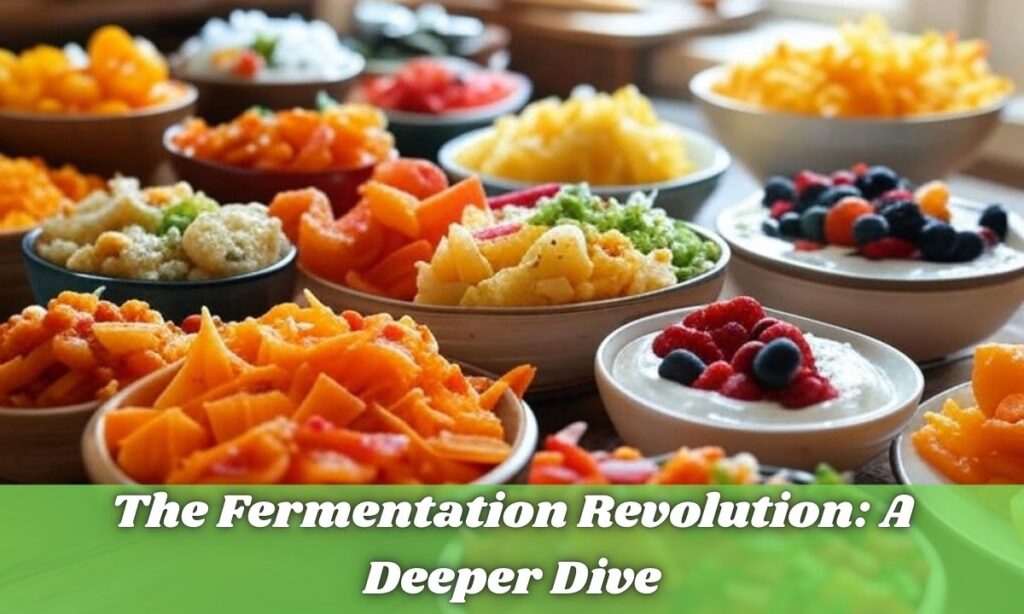
Consumers are embracing tangy, complex flavors in everyday foods. Food technologists are discovering new applications for fermentation daily. The gut health connection continues to drive interest in these traditional foods.
Health Benefits of Fermented Foods
- Gut health improvement remains the primary driver of fermented food consumption.
- Studies confirm the connection between fermented foods and improved immunity.
- Probiotics in fermented foods help maintain a healthy microbiome balance.
- Regular consumption correlates with better digestive health and reduced inflammation.
- Fermentation increases the bioavailability of nutrients in many foods.
Beyond Kombucha and Kimchi
- Fermented mushrooms are emerging as both gourmet ingredients and health supplements.
- Coffee fermentation techniques are creating complex flavor profiles for specialty brews.
- Fermented plant-based yogurts rival traditional dairy varieties in probiotic content.
- Koji-fermented proteins provide umami-rich alternatives to traditional meat products.
- Fermented honey and maple products add complexity to sweeteners.
Global Influence
- Korean fermentation techniques are inspiring chefs beyond traditional applications.
- Japanese koji fermentation is transforming Western approaches to flavor development.
- Eastern European fermented beverages like kvass are gaining popularity in Western markets.
- Traditional African fermented foods are providing new inspiration for product developers.
- Global fermentation traditions are crossing cultural boundaries through social media sharing.
Elevated Comfort Food: Nostalgic with a Modern Twist
Comfort food remains essential to our emotional relationship with eating. Classic dishes are being reimagined with contemporary ingredients and techniques.
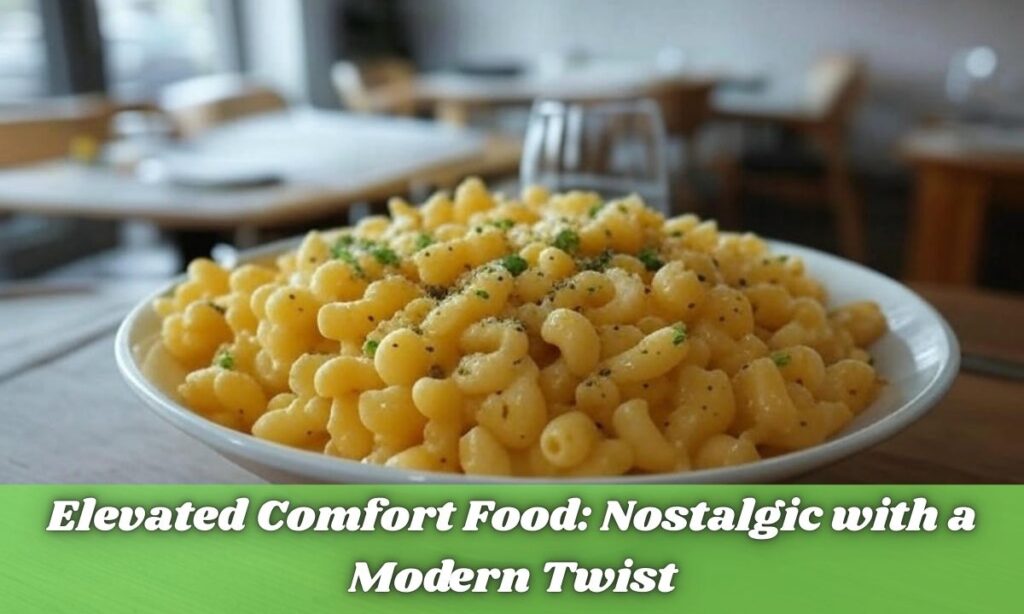
Chefs are finding the perfect balance between tradition and innovation. These updated classics satisfy both nostalgic cravings and modern dietary preferences. Comfort food is no longer at odds with health-conscious eating.
Fusion Comfort Food
- Korean-Mexican fusion continues to lead the cross-cultural comfort food movement.
- Italian-Japanese crossover dishes bring together two beloved culinary traditions.
- Indian spices are transforming American classics like mac and cheese.
- Middle Eastern flavors are being incorporated into European comfort foods.
- Regional American cuisines are blending to create new comfort food classics.
Health-Conscious Comfort Foods
- Cauliflower remains the champion vegetable for healthy comfort food transformations.
- Whole grain versions of classic pasta dishes deliver fiber without sacrificing texture.
- Alternative sweeteners reduce sugar content in beloved desserts.
- Air fryers and similar technologies create crispy textures with minimal oil.
- Portion-controlled comfort foods help consumers indulge mindfully.
Meal Kits and Frozen Comfort Foods
- Premium frozen meals now rival restaurant quality with flash-freezing technology.
- Meal kits focusing on comfort food classics simplify home cooking without processed ingredients.
- Subscription services deliver regional comfort foods nationwide.
- Chef-designed comfort food kits bring restaurant techniques to home kitchens.
- Family-sized comfort food meal solutions address the needs of busy households.
Sustainable Dining: A More Conscious Way to Eat
Sustainable dining has moved beyond trend to necessity. Consumers demand transparency in sourcing and production methods.

Restaurants and food companies are adopting planet-friendly practices. Environmental impact is now a primary consideration in food choices. The food industry is responding with meaningful changes to production methods.
Farm-to-Table with a Modern Twist
- Regenerative agriculture has replaced sustainable farming as the gold standard.
- Urban farming continues to expand, bringing production closer to consumers.
- Digital technology connects diners directly with the farms supplying their food.
- Carbon footprint labeling helps consumers make climate-conscious choices.
- Restaurants are building direct relationships with farmers to ensure quality and sustainability.
Lab-Grown Meat and Cellular Agriculture
- Cellular agriculture is scaling up to commercial production levels.
- Lab-grown meat prices are falling rapidly as technology improves.
- Regulatory approvals are expanding market access for cultured meat products.
- Consumer acceptance is growing as products improve in taste and texture.
- Investment in the sector has created competition driving faster innovation.
Seasonality and Local Sourcing
- Seasonal eating is supported by improved preservation technologies.
- Local food hubs connect small producers with larger markets.
- Seasonal menus are becoming standard even in chain restaurants.
- “Hyper-local” ingredients grown on-site are featured in high-end establishments.
- Digital platforms help consumers find and support local food producers.
Sustainable Packaging
- Biodegradable packaging innovation is eliminating single-use plastics.
- Edible packaging solutions are moving from novelty to practical application.
- Reusable container programs are expanding in food delivery services.
- Minimal packaging designs reduce waste while maintaining food safety.
- Plant-based packaging materials are replacing petroleum-based plastics.
Exotic Ingredients: A Global Culinary Journey
Global flavors continue to captivate adventurous eaters. Previously obscure ingredients are becoming kitchen staples.
Digital commerce makes exotic ingredients more accessible than ever.
Consumers are exploring cuisines beyond familiar favorites. Cultural appreciation through food exploration enriches the culinary landscape.
Flavors from Africa, Latin America, and Asia
- West African spice blends are becoming essential in forward-thinking kitchens.
- Peruvian ingredients are expanding beyond quinoa to lesser-known native foods.
- Japanese citrus varieties like yuzu and sudachi enhance dishes worldwide.
- Middle Eastern spice blends are finding applications in unexpected contexts.
- Southeast Asian herbs are appearing in mainstream grocery stores.
Superfoods and Adaptogens
- Adaptogenic herbs are incorporated into everyday foods and beverages.
- Mushroom varieties valued for health properties are becoming culinary staples.
- Ancient grains continue to gain popularity for their nutritional profiles.
- Sea vegetables move beyond sushi to become everyday ingredients.
- Functional food ingredients address specific health concerns through daily meals.
Adaptable Ingredients for Home Cooks
- Specialty spice blends make exotic flavors accessible to home cooks.
- Shelf-stable exotic ingredients allow for experimentation without waste.
- Online cooking classes teach proper techniques for unfamiliar ingredients.
- Recipe developers focus on incorporating exotic elements into familiar dishes.
- Subscription boxes introduce consumers to new global ingredients monthly.
Mindful Eating: Food as Fuel and Well-Being
Mindful eating approaches food as both nourishment and pleasure. Consumers are making conscious connections between diet and mental health.
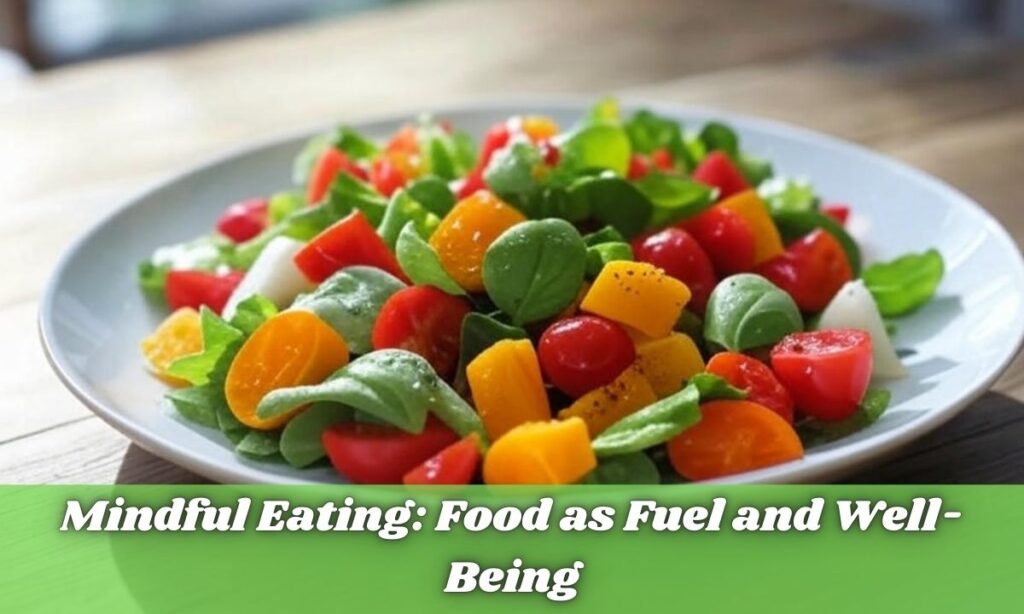
Food choices are increasingly guided by both bodily and emotional needs. Eating patterns reflect growing awareness of food’s impact on overall wellness. The concept of balance has replaced rigid dietary rules.
Mental Health and Food
- Brain-supporting nutrients are highlighted in foods marketed for mental wellness.
- Omega-3 fatty acids remain crucial components of mood-supporting diets.
- Anxiety-reducing foods and beverages are growing in popularity.
- Eating for cognitive performance is extending beyond athletic nutrition.
- The gut-brain connection is becoming central to mental health discussions.
Anti-Inflammatory Diets
- Chronic inflammation is recognized as an underlying factor in many health conditions.
- Turmeric and ginger remain staple anti-inflammatory ingredients in many preparations.
- Colorful fruits and vegetables are valued for their anti-inflammatory properties.
- Healthy fats are emphasized for their role in reducing systemic inflammation.
- Sugar reduction is a primary strategy in anti-inflammatory eating plans.
Mindful Eating Practices
- Slow eating techniques promote better digestion and satisfaction.
- Appetite awareness training helps reconnect people with natural hunger signals.
- Community eating experiences foster connection and mindful consumption.
- Digital detox during meals enhances the sensory experience of eating.
- Portion awareness replaces strict calorie counting in mindful approaches.
Zero-Waste Cooking: Reducing the Environmental Impact
Food waste reduction has become a central concern for environmentally conscious eaters. Creative approaches to using the entire ingredient are now mainstream.
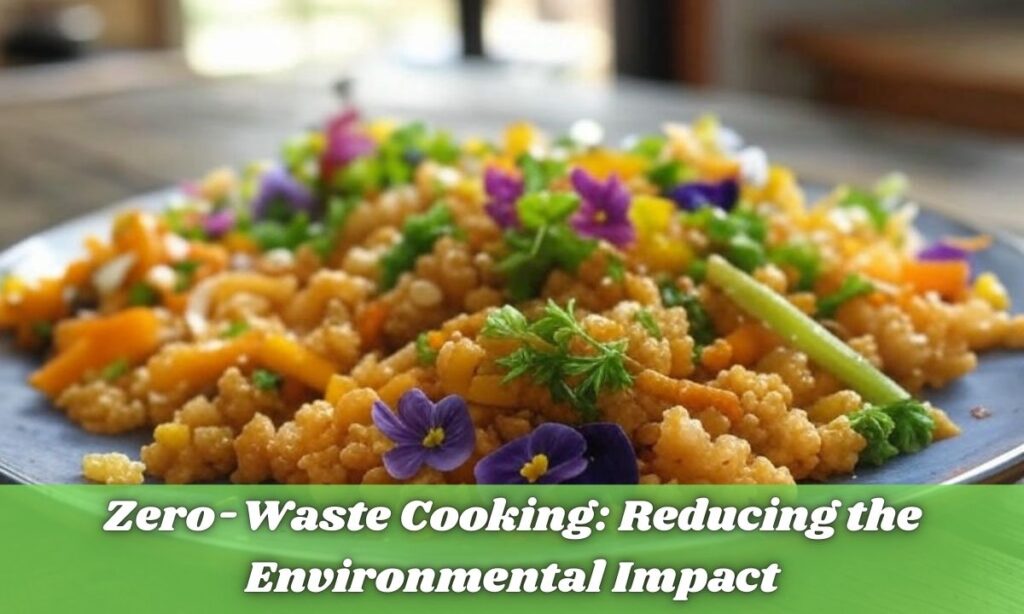
Both home cooks and professional chefs prioritize minimizing waste. Economic benefits align with environmental goals in waste reduction. Educational initiatives are raising awareness about food waste impact.
Zero-Waste Meal Planning
Zero-waste meal planning focuses on utilizing every part of your purchased ingredients. Rather than discarding vegetable scraps or fruit peels, they’re transformed into flavorful broths and nutritious snacks.
This approach not only reduces environmental impact but also maximizes the nutritional value of your groceries while helping you save money and get creative in the kitchen.
Innovative Ways to Use Leftovers
Transform yesterday’s meals into exciting new dishes instead of facing boring reheats. Leftover roast chicken becomes a fresh chicken salad, while stale bread turns into homemade croutons or breadcrumbs.
This approach adds variety to your weekly menu, reduces food waste significantly, and stretches your food budget further with minimal additional effort.
Upcycling Ingredients
Upcycling takes food waste prevention to the commercial level by transforming would-be discarded products into high-quality foods. Spent brewing grains become artisanal breads and cookies, while imperfect produce transforms into premium sauces and jams.
This innovative approach addresses global food waste challenges while creating unique products with compelling sustainability stories behind them
Sustainable Cooking Practices
Embracing sustainable cooking means adopting methods that minimize environmental impact beyond just ingredients. Batch cooking reduces energy use, while investing in quality reusable containers eliminates single-use plastics.
These small but meaningful changes in how we prepare and store food collectively contribute to significant positive environmental impacts across households..
The Future of Fast Food: Healthier, Tasty, and Convenient
Fast food innovation is meeting growing demand for healthier options. Convenience no longer requires compromise on nutrition or ethics.
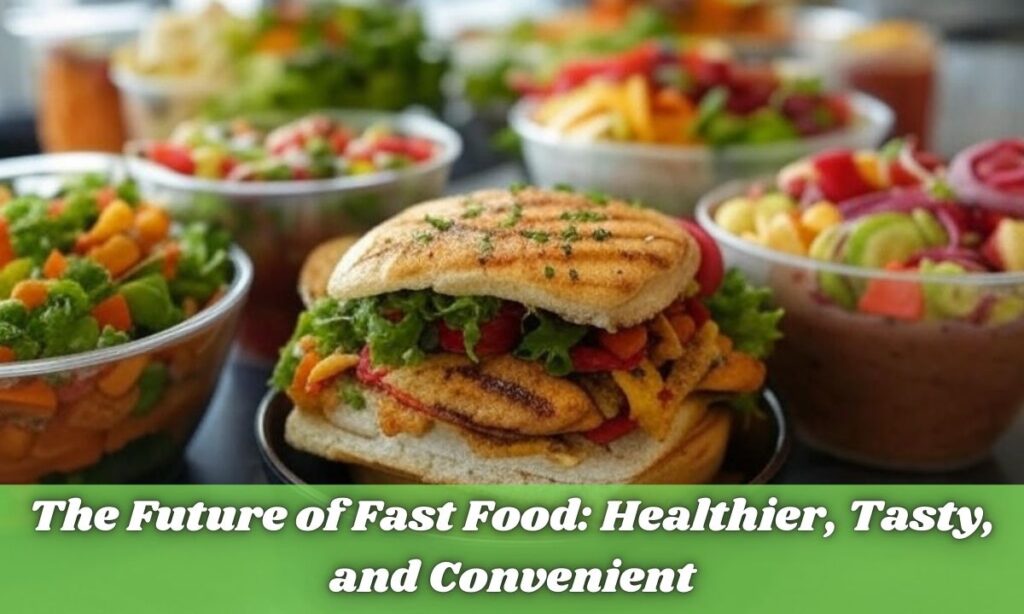
Technology is transforming the fast food experience from ordering to delivery. Consumer expectations have permanently shifted the industry toward better ingredients. The line between fast food and fast casual continues to blur.
Healthier Fast Food Options
Fast food is evolving beyond greasy burgers to meet growing health consciousness. Chains now offer plant based alternatives, keto-friendly options, and calorie conscious meals that don’t sacrifice flavor.
This shift represents fast food’s adaptation to changing consumer priorities, making quick meals compatible with fitness goals and dietary restrictions without losing convenience.
Tech-Driven Fast Food
Technology is revolutionizing how we experience fast food in 2025. AI-powered ordering systems remember preferences, while robotics ensure consistent food preparation and quality control.
These advancements reduce wait times and human error while creating more personalized experiences. The tech integration makes fast food more efficient while meeting increasing expectations for speed and consistency.
Transparency and Ingredients
Today’s consumers demand to know exactly what’s in their food, forcing fast food chains to prioritize transparency.
Clear ingredient lists, allergen information, and nutritional data are now standard across menus. This shift reflects growing consumer awareness about food quality and safety, building trust through honesty rather than marketing claims about product contents.
Personalization and Customization
Fast food is no longer one-size-fits-all, with chains offering unprecedented customization options. Customers can modify meals to suit dietary needs like gluten-free, vegan, or low-carb with easy menu interfaces.
This evolution acknowledges the diversity of modern diets and preferences, allowing fast food to remain relevant by adapting to individual requirements rather than forcing limited choices.
Frequently Asked Questions
What plant-based proteins are trending in 2025?
Pea protein, mycelium (fungus based) proteins, and chickpea proteins are leading the plant-based protein market.
How can I incorporate fermented foods into my daily diet?
Start with familiar options like yogurt or sourdough, then gradually add fermented vegetables and condiments to regular meals.
What are adaptogens and how can I use them?
Adaptogens are stress-reducing herbs and mushrooms that can be added to smoothies, teas, coffees, and baked goods.
How can I practice zero-waste cooking at home?
Plan meals carefully, save scraps for stocks, freeze leftovers promptly, learn preservation techniques, and compost inedible remains.
Is lab-grown meat safe and environmentally friendly?
Yes, lab-grown meat has passed safety testing and significantly reduces environmental impact compared to conventional meat production.
Conclusion
The food landscape of 2025 represents a fascinating intersection of technology, sustainability, health consciousness, and global influence. These trends reflect our collective desire for food that nourishes both body and planet.
Innovation continues to make healthy and sustainable choices more accessible and delicious. The boundaries between different culinary traditions are blurring as we embrace a truly global palate. By understanding these trends, we can make more informed choices that align with both personal and planetary wellbeing.

SEO expert focused on boosting online visibility and driving organic traffic. Passionate about data analysis, strategy, and the latest digital marketing trends.
